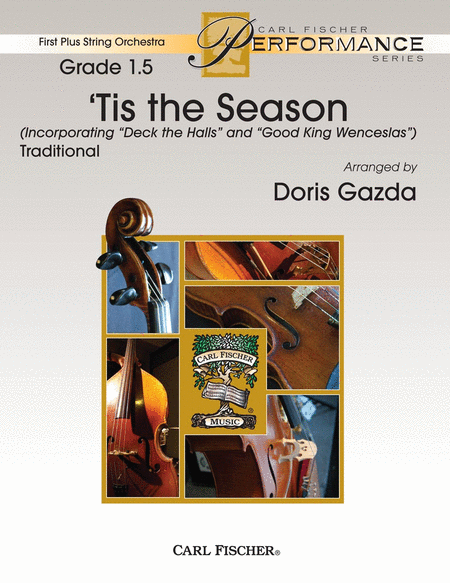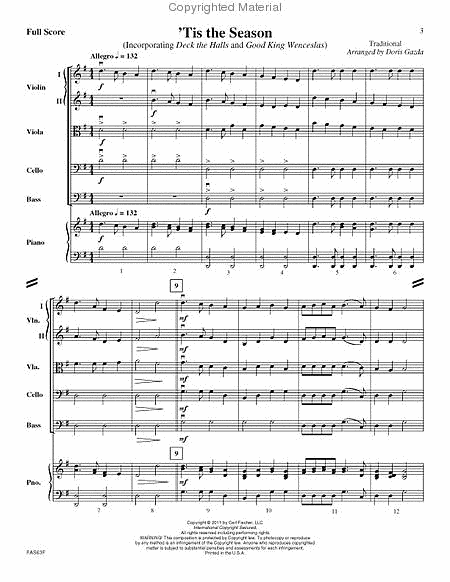'Tis The Season
Incorporating Deck The Halls and Good King Wenceslas
-
Ships in 1 to 2 weeks
Details
Description
SKU: CF.FAS63
Incorporating Deck The Halls and Good King Wenceslas. Composed by Traditional. Arranged by Doris Gazda. Collate - FS SWS. First-Plus String Orchestra (FAS). Set of Score and Parts. With Standard notation. 8+16+16+4+10+10+10+3 pages. Duration 2 minutes, 35 seconds. Carl Fischer Music #FAS63. Published by Carl Fischer Music (CF.FAS63).ISBN 9780825883866. UPC: 798408083861. 8.5 x 11 inches. Key: G major.
Respected veteran composer and educator Doris Gazda is an expert in making your young orchestra sound fantastic and accomplished, and this lovely arrangement of the melodies from "Good King Wenceslas" and "Deck the Halls" will do just that. Your students will be sure to revel in the celebration of the Christmas season along with the audience.
Carols were first sung in Europe thousands of years ago, but these were not Christmas Carols. They were pagan songs played at the Winter Solstice celebrations while people danced around stone circles. The Winter Solstice is the shortest day of the year, usually taking place around the 22nd December. The word Carol actually means dance or a song of praise and joy. Carols used to be written and sung during all four seasons, but only the tradition of singing them at Christmas has really survived.Tis the Season is a combination of two well-known carols, “Deck the Halls” and “Good King Wenceslas.”The tune for “Deck the Halls” is that of an old Welsh air, first found in a musical manuscript by Welsh harpist John Parry Ddall (1710–1782). The tune actually dates back to the sixteenth century and belongs to a winter carol, “Nos Galan.” The composition is still popular as a dance tune in Wales and has become a traditional Yuletide and Christmas time carol. The “fa-la-la” refrains were probably originally played on the harp and the remaining lyrics are American in origin dating from the nineteenth century.A legend based on the life of Saint Wenceslaus I, Duke of Bohemia (907-935 CE), tells that he went through the countryside to give alms to poor peasants on the Feast of Saint Stephen (December 26). During the journey Wenceslaus’s page kept his freezing feetwarm by means of jumping into the Duke’s footprints in the snow that miraculously had heat emanating from them. In 1853 English hymn writer John Mason Neale wrote the “Wenceslas” lyrics based upon this legend. He then set the words to a tune based on a 13th century carol from a Finnish song collection. Following is the first verse of the carol. To get the entire story in the carol’s words, look for all six verses in a book of carols.Good King Wenceslas looked out, on the Feast of Stephen,When the snow lay round about, deep and crisp and even;Brightly shone the moon that night, tho’ the frost was cruel,When a poor man came in sight, gath’ring winter fuel.


 Share
Share